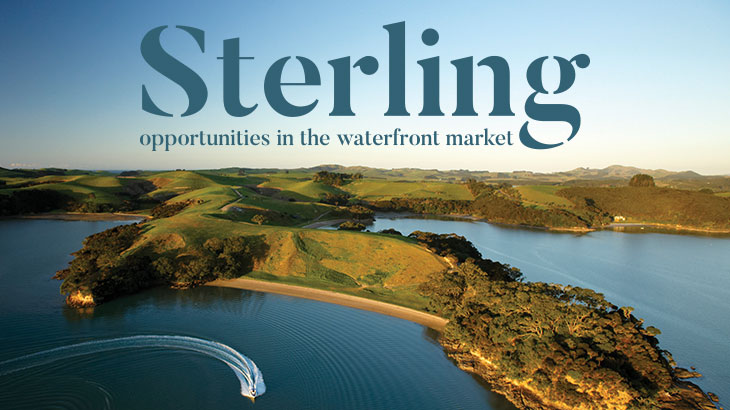Sterling opportunities in the waterfront market
With 25 years of focused waterfront property marketing under its belt, we look at some of the trends in this coveted sector.
Some of the most outstanding waterfront locations in the world can be found across New Zealand and the Pacific Islands.
In launching the inaugural Waterfront magazine back in 1994, then-managing director and now chairman of Bayleys, John Bayley, stated that New Zealand was seen as an environmentally-secure location for international investors thanks to its scenic beauty, and potential for long-term growth in tourism and related industries.
Quarter-of-a-century on, an altered regulatory environment has raised the investment threshold for off-shore domiciled buyers. However, the appeal of New Zealand as a safe haven at the bottom of the globe nonetheless endures with expatriates actively securing waterfront property in order to reconnect with their homeland and to consolidate memories for their own families.
Scarcity of premium waterfront property serves to enhance its appeal and value both domestically and internationally.
Bayleys’ research confirms that In 2018/19 five of the 10 highest-value property sales around New Zealand were of waterfront property showing that as sector, sought-after waterfront locations continue to drive value.
Yes, there’s far more talk of the potential impact of climate change on waterfront land today than 25 years ago, however, as with any property acquisition, buyers will make a purchasing decision made on fundamentals that stack up for them.
Waterfront takes a look at some key niche subsectors around the country to see what has changed – and what has endured.
Coastal estates
One of the major changes witnessed in the waterfront market in the last 25 years has been the emergence of coastal farm parks or estates – in premium recreational locations, and offering exceptional waterfront lifestyle options for largely high-net-worth private buyers.
John Greenwood of Bayleys’ special projects team says this trend started with the 125 hectare Headland Farm Park at Manganese Point in Northland, where by the early 1990s, 82 freehold home sites with portions of common ownership land and amenities, were sold.
Mataka Station, Wiroa Station and The Landing on the Purerua Peninsula northeast of Kerikeri; Omarino in the Bay of Islands; Closeburn in Queenstown and, Breamtail at Mangawhai Heads, are subsequent flagship examples of this concept.
“These premiere coastal subdivisions have seen large tracts of land covenanted for the protection of those buying into them and thus underpinning the long-term environmental and amenity value of these assets,” says John.
“Intimate communities of like-minded people are enjoying unparalleled lifestyles in covetable coastal locations which were previously not accessible.
“Owners within these communities have access to amenities such as boat ramps and sheds, recreational pavilions, tennis courts and walking tracks so they’re purchasing far more than just land and a house site.
“The consent processes that have enabled these developments to proceed have been rigorous, conservation areas have been carefully preserved and the design protocols for built forms exceedingly strict.”
New horizons
With the gentrification of the Viaduct Harbour area some 20 years ago, and the evolving Wynyard Quarter on Auckland’s waterfront currently setting the standard for mixed-use waterside precincts, other emerging waterfront property locations around the country are leveraging off council zoning and planning changes.
In Lower Hutt, a satellite city in the Wellington region, the Council is progressing with moves to create a riverside promenade along the Hutt River, lined with shops, cafes and apartments. There’s land yet to be acquired and commercial sentiment still to be addressed, but the aim is to develop a water-facing profile for the city.
Plans are afoot for residential apartment development in Whanganui to optimise connection with its river, while in Dunedin, lofty ideas are being explored to regenerate the city’s waterfront to better connect the CBD with this area.
At Hobsonville Point in Auckland, land that has long-been a hub for seaplane-based aviation is metamorphosing into prime waterfront real estate.
New ways of living and working are opening up and mixed-use amenities like apartment living, a co-working space, cafes and a micro-brewery are underpinning evolving neighbourhoods.
Read more...
[Download PDF guide]